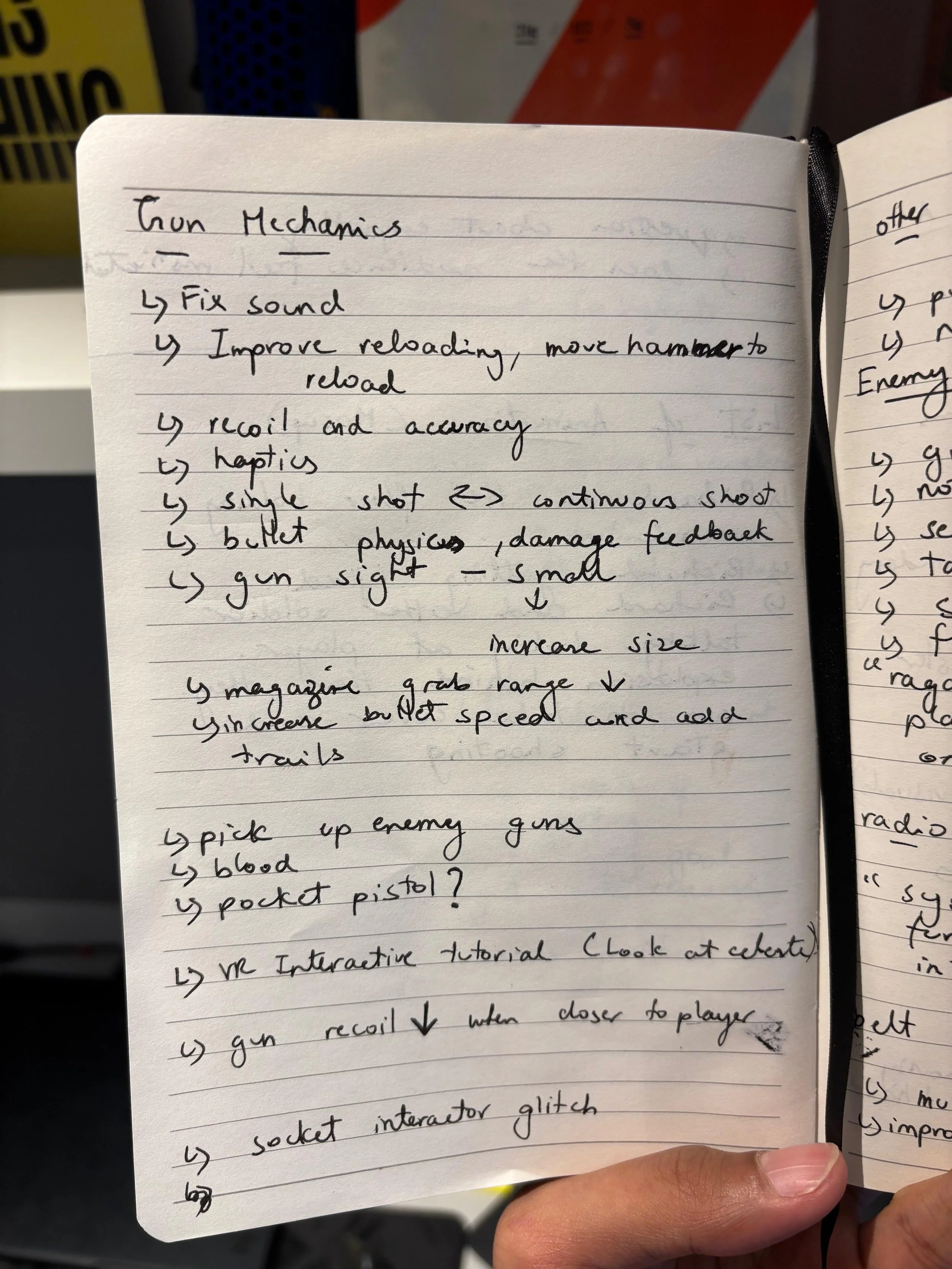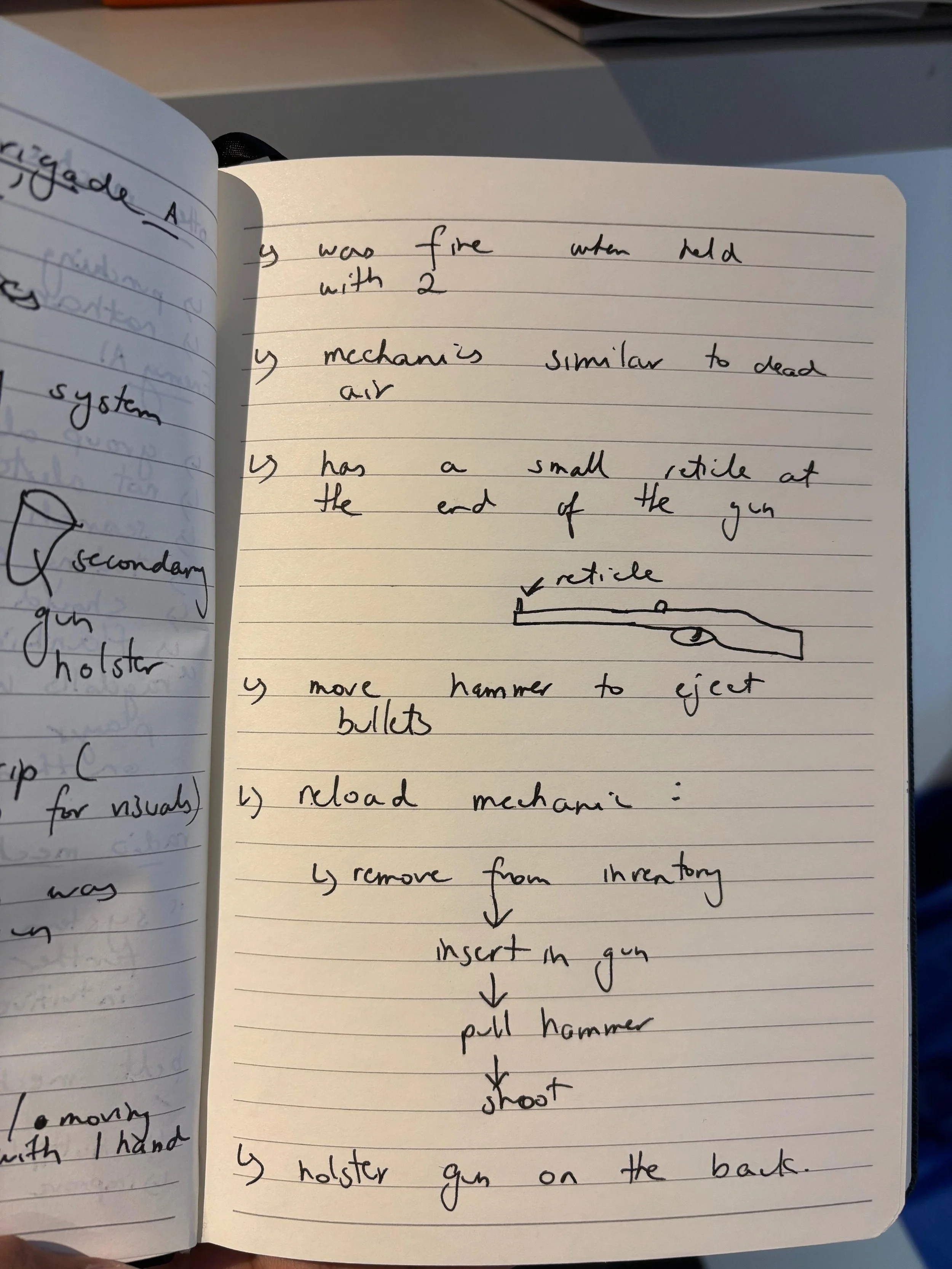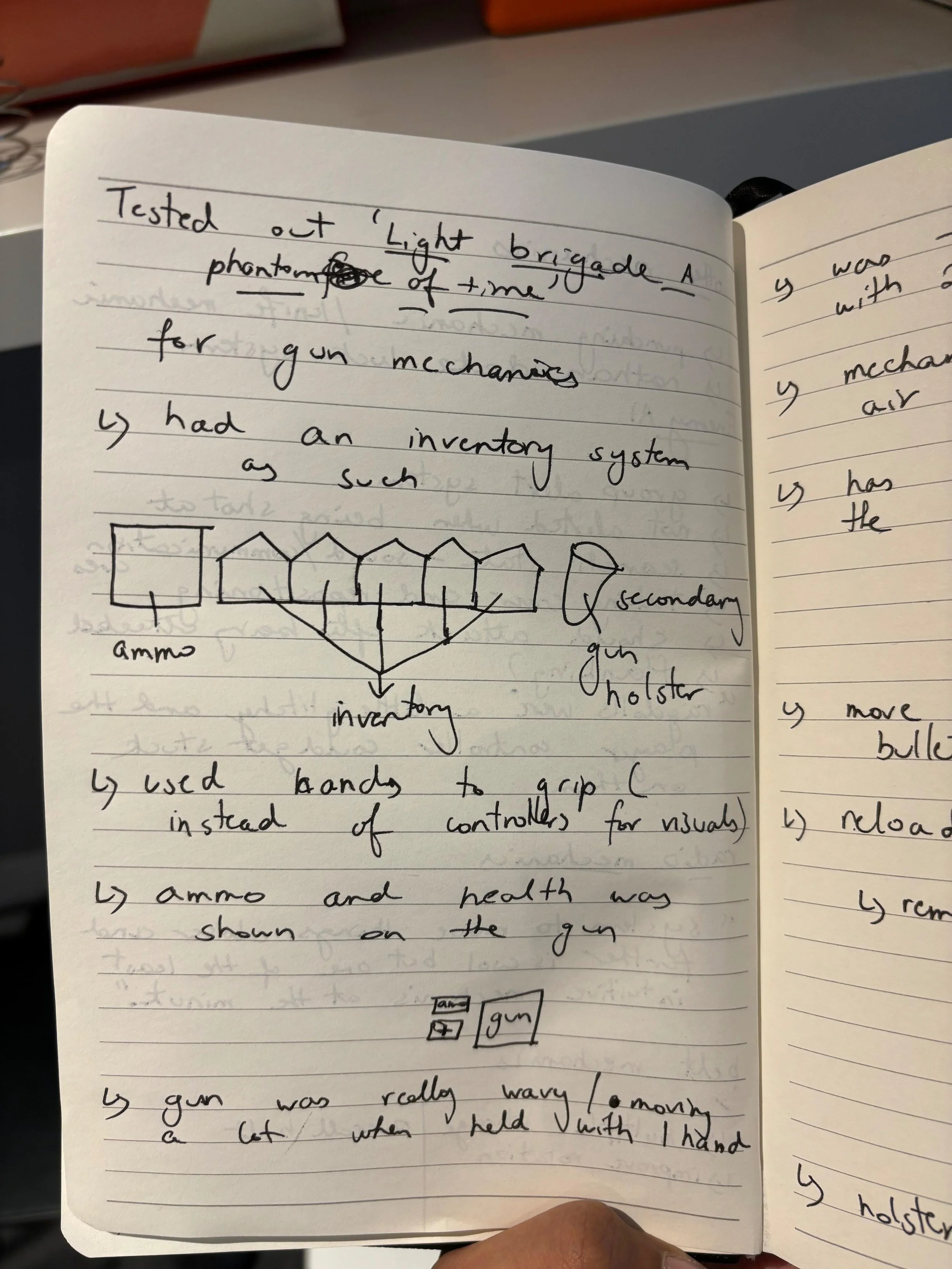Gun Mechanics
Designing immersive and tactile weapon mechanics for VR—built to feel grounded, responsive, and wartime-authentic.
Initial Setup & Testing
Imported and cleaned up an M2 Carbine model in Blender, fixing topology and assigning materials before exporting to Unity.
I got familiar with Unity’s XR Interaction Toolkit and adapted the base blaster system to support realistic weapon handling.
Added bullet prefabs, casing ejection, recoil physics, and animations using Unity and ChatGPT-assisted scripting.
Note: All mechanics shown here are fully playable in VR using Quest 3 via Unity’s XR Toolkit.
Reloading & Magazine System
Broke down gun into interactive parts: body, trigger, hammer, magazine, bullet casing.
Designed a Socket Interactor system to support inserting/removing magazines.
Implemented magazine tracking logic (30 bullets per mag) and audio cues for attaching/removing.
Created a detailed reload mechanic:
remove from inventory → insert into gun → shoot
Ammo Pocket System
Inspired by Batman: Arkham Shadows, experimented with a mag spawner behind the player’s FOV.
Replaced it with a belt-based mag pocket system for consistent UX.
Built and textured the belt in Blender, scripted it to:
Match player height
Rotate only on Y-axis
Ignore small head movements (dead zone logic)
Snap when using snap-turning
In Progress
Improve reload interaction (hammer pull, sound sync)
Add bullet trails and impact visuals
Implement blood and hit feedback
Pocket pistol and holster system
Fine-tune recoil based on player distance
Fix socket interactor glitches
These next steps focus on making the gun feel more responsive and grounded—balancing realism with smooth player interaction.







